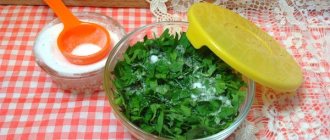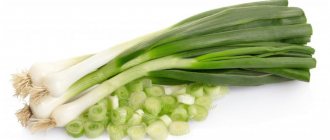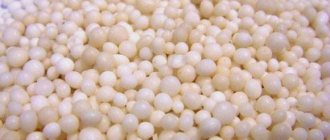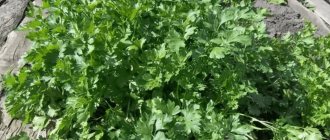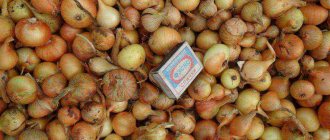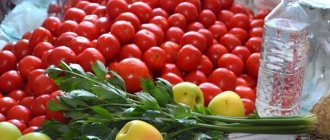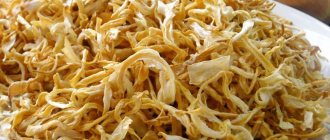Parsley is a spicy representative of greens, revered in any family. It is not surprising that many gardeners are interested in growing this plant. The frost resistance of parsley allows it to be planted almost all year round, and planting before winter has a number of advantages. However, in order to get a bountiful harvest, you need to know the subtleties and nuances of cultivation.
Advantages
Sowing parsley before winter has a list of advantages that make the late cultivation method so popular:
- Abundant harvest. Seeds that survive autumn and winter frosts become much hardier, stronger and healthier, which implies a high germination rate.
- Speed. Parsley planted before winter can yield a harvest in the shortest possible time. It is significantly ahead of its spring counterparts and leaves earlier by 3-4 weeks. Snow cover makes it possible for the plant not to freeze, and the first spring sun and warmth will allow it to quickly grow and ripen.
- Versatility. The soil in which parsley was grown can be reused, which not every crop can boast of.
- Save time. In the spring, when active farming activities begin to plant other plants, more time will be freed up for these tasks, since it will not need to be spent on planting parsley.
Features of planting parsley in the cold season
Planting a crop in the autumn is good because you can get the desired result much earlier than planned. Seeds that survive the cold germinate actively and the plants emerge from them strong and strong. Shoots appear quite early, as soon as the snow melts and warm, clear weather reigns. Early harvesting of greenery makes it possible to use the bed again, which has a good effect on the quality and quantity of the harvest. In addition, there is plenty of time left for other garden work.
The right time
On average, the best time to plant parsley before winter is the end of October or the beginning of November. However, depending on the climatic conditions and temperature conditions of the region, the significant day may be brought closer or delayed.
Greens should be planted before the first frost, so as October approaches, it is advisable to keep a close eye on weather forecasts. Night temperatures fluctuating between 2-3 degrees below zero are a signal that it’s time to plant parsley.
How to plant parsley before winter
Moving on to the most responsible and important part - sowing seeds in open ground, special attention should be paid to the weather conditions of the region - in the Moscow region, for example, winter planting of parsley is usually practiced after the temperature has reached +3 to +4 degrees. It should be noted that autumn planting of parsley involves the use of a large number of seeds - experienced gardeners add about 30–35% to the usual norm.
You will be interested to learn about the peculiarities of sowing dill and parsley before winter.
This is done in reserve, since none of the existing methods of increasing seed germination guarantees their preservation 100%. The technology for planting greenery in the autumn is not much different from the same procedure in the spring - a significant difference is observed only in the distance between the furrows.
General recommendations for winter planting parsley look like this:
- The film that covered the top of the bed must be put aside, and it is recommended to cover the bottom of the furrows with a thick layer of sand, which helps preserve the seeds.
- Next, the seeds are carefully placed in the furrows and sprinkled on top with a pre-prepared dry nutrient substrate, which is subsequently compacted.
- To avoid the formation of a “soil crust” that prevents the full development of plants, the soil must be mulched - peat or humus is best suited for this purpose.
- In case of prolonged rains, the bed must be covered with film again to protect the seeds from premature moisture. As soon as the frosts have finally set in, the covering material can be removed.
Seed preparation
The high content of essential oils in parsley seeds determines its long germination period. Therefore, in order to enjoy homemade greens as soon as possible, planting material must be properly prepared in advance:
- The first stage of preparation is careful selection and rejection of seeds. Among all of them, it is necessary to select the best representatives. Damaged, spoiled, low-quality seeds should be removed from the general accumulation without the slightest fear.
To speed up the emergence of seedlings, you can briefly keep the planting material in a disinfectant solution. For this purpose, a solution of boric acid, copper sulfate or potassium permanganate can be used.
- The next step is soaking. To do this, wrap the seeds in several layers of damp gauze. In this form they should last, on average, about 5 days. It is important to maintain the temperature regime - room temperature (22-25 degrees above zero) should be maintained in the place where the planting material is soaked throughout the entire soaking period.
- As soon as the seeds germinate, leave them still in damp gauze, but this time reduce the temperature to low levels - no more than 2 degrees Celsius, for hardening. To do this, the sprouted seeds are placed on the bottom shelf of the refrigerator for 7-10 days. After this time, the material is completely ready for planting.
Hardening off the seeds will come in handy if you plan to plant parsley before winter, although it is not mandatory.
There are also other methods of preparing seeds that are used less frequently by gardeners and farmers, but are not less effective:
- Bubbling. A procedure aimed at disinfecting planting material, sharply accelerating the emergence of seedlings and increasing germination. To do this, the seeds are soaked in cool (about 20 ° C) water, which the compressor continuously saturates with oxygen or air.
- Vernalization. This method is also aimed at accelerating the growth of parsley. To carry it out, the swollen seeds of the plant are kept at a low positive temperature for a short time (for example, at night), and then at room temperature (during the day). Vernalization is carried out over 7-10 days.
- Pelleting. To carry out this, you will need a special agricultural unit - a dragator. The essence of the technique is to envelop the seeds with a protective nutrient shell in the shape of a ball. As a rule, a complex of humus, peat and mineral fertilizers is used. Pelleting will ensure easy sowing of parsley with minimal time and effort.
About parsley: tricks for autumn sowing
About the temperature.
The optimal temperature is up to -1...-5 °C at night, +1...+7 °C during the day.
Important! Seeds should not actively germinate - at low temperatures the seedlings will die!
However, seedlings (seedlings) can withstand short-term -5...-7 °C, but not for long. But already at +2…+3 °C soil, the seeds begin to actively germinate. Therefore, it is important to plant in cold soil, but not below freezing by 2-3 cm.
About the soil.
Optimal acidity 6.5-7: not sour, but not alkaline. The soil should not be too loose; there is no need to loosen it before sowing: the seeds will be washed out and do not adhere well to the soil particles.
About fertilizing
. Leafy varieties do not like excess nitrogen and humus; the poorer the soil, the better. But they are demanding of potassium, calcium, and phosphorus
For root varieties, application rates: nitrogen 5.3 g/m2, potassium 9.2 g/m2,
phosphorus 0.7 g/m2, calcium 2 g/m2.
Root varieties are more demanding of nitrogen (consumption rates are 2 times higher), as well as potassium - it contributes to the formation of large root crops.
But organic
both types are not favorable: the root crop is formed uneven, bearded, and the greens are damp, too juicy, without an intense smell.
Selecting a location
Choosing the right place for planting is one of the three components of successfully growing parsley in the cold season. To select the right site, you should adhere to the following criteria:
- The first criterion for a successful location is lighting. Greenery is quite unpretentious to its growing conditions, and even in the shade it will feel quite comfortable. However, sufficient light will allow you to reap a larger harvest. Therefore, for planting, it is better to choose an area where daylight hours will be the longest. An open area in this case will be the best choice.
If onions, tomatoes, potatoes, cabbage or garlic previously grew at the potential planting site, this will be a significant advantage. But if carrots were previously grown in this area, it is better to find another place.
- The second criterion for a good location is snow cover. The more snow there is in winter at a potential landing site, the better. Snow will provide reliable protection for parsley from severe winter frosts and maintain the level of humidity it needs.
- The last selection criterion is conditions that pose a risk to the seedlings. Of course, parsley needs a certain amount of moisture, but this does not mean that the plant will withstand its excess. Therefore, areas where there is a risk of flooding are not suitable for growing these greens. This rule also applies to extremely windy places.
Advantages and disadvantages of winter planting
Before starting to plant parsley seeds in open ground, any summer resident should ask himself about the timing of this event. Traditionally, only two types of crop planting are practiced - in the spring and in the fall before winter. There is no significant difference between spring and winter crops.
However, the second option, for many reasons, is considered more profitable and more popular among experienced gardeners. Contrary to popular belief, parsley is very cold-resistant and easily tolerates frost, so winter planting of the crop will not cause any harm to the crops or seedlings.
- Other benefits of the technology include the following:
- possibility of getting an early harvest;
- high resistance of winter crops to diseases and low temperatures;
- significant acceleration of seedling growth;
- the possibility of reusing the bed;
- simplification of agrotechnical work on crop care;
- saving time and labor resources.
Parsley seeds planted in the cold season are characterized by more active growth and the formation of strong, hardened plants. Taking into account the other features and good immunity of this crop, most gardeners recommend and actively practice winter planting. However, this method also has negative aspects, which cause certain difficulties for novice gardeners.
- These most often include the following:
- the difficulty of accurately determining the timing of sowing;
- changeable and unpredictable weather conditions;
- risk of seeds freezing;
- limited shelf life and the impossibility of transporting the crop.
All these disadvantages and risks can be easily minimized if you approach this procedure responsibly and use already proven recommendations and tips for planting and further caring for plants.
Important! The best predecessors for the crop are cucumbers, potatoes, cabbage and carrots. However, after parsley, these crops should be planted in their original place no earlier than after 3 years.
Soil preparation
The last component of an abundant and high-quality parsley harvest in the spring is soil that is properly prepared in the summer, which must be cultivated and fertile.
To create the ideal soil for sowing parsley before winter, you will need to follow several steps:
- Immediately after collecting plants growing at the site where the greenery will be planted, treat the soil with superphosphate and potassium salt in a concentration not exceeding 20 grams of the substance per 1 square meter of area.
- Fertilize. It is strongly recommended not to use pure manure for this purpose. But the combination of rotted manure and sand will allow parsley to grow and develop without the risk of rotting seeds. The soil from such fertilizer will conduct moisture well and will be easy to loosen.
- Loosen the soil thoroughly and efficiently.
- Improve the quality of the top layer of soil by “diluting” it with sand or peat. This should be done carefully so that the soil remains soft, airy, and not compacted.
Sowing
You can plant parsley before winter either directly in the garden or at home. Before planting, you should be prepared for large expenditures of material: you will need a third more seeds than during spring or summer planting. Winter is a harsh season, and despite the frost resistance of parsley and preliminary hardening, on average only 70% of the planted seeds germinate.
Outdoors
Planting parsley in the garden will not be difficult even for a novice farmer who will need to take only 4 steps:
- If the seeds have been pre-soaked and have successfully completed the preparatory stage, they need to be given some time to dry and get rid of excess moisture. A few hours will be enough.
- Moisten the soil with light watering.
- Now you can start sowing. To do this, plant the seeds in the ground to a depth of no more than 1 centimeter. When immersing seeds, it is important to maintain a distance: there should be at least 15 centimeters between the rows of future parsley, and about 3 centimeters between the bushes.
To speed up the appearance of the first shoots, you can cover the beds of greenery with polyethylene and remove it when the shoots appear. Such a shelter will allow you to maintain an optimal temperature for the greenery.
- Mulch future plants with a three-centimeter layer.
If all conditions for proper planting are met (optimally chosen site, properly prepared seeds and high-quality fertilizer), after a week and a half, the first shoots can be detected. Dry seed may take a little longer.
At home
Due to the lack of a garden or land, or due to other reasons why it is not possible to grow parsley in open ground, it can also be grown at home, using boxes and pots that should be spacious enough.
To sow greens before winter at home, you need to follow these steps:
- Soak the seeds. To do this, heat the water to 38 degrees Celsius and leave the planting material in it for 3 days. Every 12 hours the water must be replaced with the same hot water.
- Cover the bottom of the container with a drainage mixture (a combination of pebbles and expanded clay) with a layer of several centimeters.
You can use high-quality fertilized soil from the garden, if you can get it. Otherwise, a universal primer from the store will do.
- Pour water and lightly compact the resulting homemade bed.
- Make small furrows in the soil, about 1 centimeter deep, and then proceed directly to planting. A pleasant bonus of planting parsley at home is the fact that in a container it can be sown more compactly: about 10 centimeters between rows. There will be enough distance between the future bushes of a couple of centimeters.
- Sprinkle the seedlings with a light layer of soil and place the container with the seeds in a well-lit place, such as an east- or south-facing windowsill, to provide sufficient lighting.
- Constantly maintain a suitable temperature for parsley, fluctuating between 15-20 degrees Celsius. Deviations in the smaller direction lead to slower growth of the plant, and deviations in the larger direction lead to drying out. If it is not possible to provide sufficient light at home, it is possible to use a regular table lamp, which must be placed at a distance of about half a meter from the box or pot with seedlings.
As soon as the bushes reach 10 centimeters in height, you can safely harvest: this parsley is already suitable for consumption.
Care
Until the first sprouts emerge above the ground, caring for and caring for parsley comes down to the gardener’s attentive attitude to watering and ventilation. Seedlings should be watered regularly as the soil dries, but not too much. Uninvited guests in the form of weeds should be removed at first detection.
In case of sudden severe frosts, the parsley can be covered with a special agronomic fiber that allows air to pass through well.
As soon as the first 2-3 true leaves appear, you can start weeding and thinning. Any manipulations must be carried out by the farmer carefully, taking care not to damage the fragile and vulnerable plant and its root system.
In order for parsley to form full-fledged leaf rosettes, it must be fed twice: when the first leaves appear and as soon as a full-fledged small rosette is formed. For these purposes, fertilizer is used, made from mullein or compost in a ratio of 9 liters of water per 1 kilogram of organic matter. It would not be superfluous to add 15 grams of potassium sulfate and superphosphate.
Timely watering, loosening, thinning and fertilizing parsley are excellent preventive measures for diseases of this plant. However, sometimes it can become infected:
- white spotting;
- brown rot;
- powdery mildew;
- peronosporosis;
- early burn;
- rust.
If any suspicious formations are detected on the plant, it must be processed. To do this, use a weak (1%) solution of Bordeaux mixture, which must be used to treat all the green parts of the parsley. Spraying with a 1% solution of colloidal sulfur helps rid the plant of powdery mildew especially effectively.
Diseases and pests
Diseases
The most common diseases to which parsley is susceptible are powdery mildew, rust, white rot and other diseases of leaves and underground parts, externally expressed in the formation of plaque and spots from white, light gray to yellow and brown, followed by the death of the plant.
Compliance with the rules of crop rotation helps prevent plant damage - planting in the same place no more than once every 4 years, spraying at the first symptoms with Bordeaux mixture (copper sulfate and lime, 100 g per 10 liters of water).
In the fight against such plant diseases, prevention is primarily important. This applies to proper soil and seed preparation.
Pests
Pests that attack parsley include midges, midges, the same ones that attack carrots, nematodes and aphids.
Midges, as a rule, are colored in the color of the above-ground parts of plants, so it can be difficult to notice them right away. A sign of plant damage: curling of leaves and unnatural “doubleness” of the tops. Midges feed on the sap of plants, as a result they wither, roots and leaves become dry, grow and develop poorly.
The result of the attack of flies on the leaves is a change in their color to red and purple, then drying out and death of the plant.
The roots are acquired by the larvae, who gnaw winding passages in them. As a result, the plants become completely unsuitable for food.
Control measures:
- Correct crop rotation.
- Spraying with special preparations (large selection in specialized stores for gardeners and gardeners). The most famous are Iskra, Fitoverm.
- Soil treatment with karbofos in late autumn and early spring.
Among the folk methods, gardeners recommend spraying with a solution of soap and red or black pepper, the pungent smell of which repels pests. The row spaces are sprinkled with ash or a mixture of naphthalene and river sand (ratio - 1:10).
Harvest and storage
Parsley should be collected gradually: as it ripens and is needed. A rational attitude to collecting leaves and roots will provide the gardener with fresh and tasty aromatic greens for a long time.
Methods for storing parsley leaves may vary depending on your needs. For long-term preservation of the harvest, greens can be frozen or dried. And if you need the spice in the near future, then just put it in the refrigerator or prepare it in oil.
The roots of the plant should be stored in a wooden box and in a cool place. For better preservation, it is strongly recommended to cover them with sawdust or sand.
The best varieties
Not every variety of parsley will tolerate sowing well before winter. Therefore, if you choose this particular technique, you should pay attention to the following frost-resistant leaf varieties:
- Bogatyr;
- Breeze;
- Carnival;
- Leafy curly;
- Leafy common;
- Esmeralda.
Root varieties with fewer hard leaves can also be sown successfully in late fall. The following varieties will give a particularly good harvest in such conditions:
- Alba;
- Berlin;
- Good morning;
- Spicy;
- Sugar;
- Harvest.
Any gardener, even a beginner, can grow parsley. This unpretentious plant feels equally good in cold autumn and frosty winter. Sowing this spicy herb before winter will allow you to get a generous and high-quality harvest in early spring, when other plants are just beginning to be planted.
0
0
Copy link
Popular varieties for winter cultivation
Not all vegetable varieties are suitable for planting before winter. The most common greens with early and medium ripening periods are:
- root parsley Russian size with snow-white pulp and a sweetish taste of the underground part of the plant;
- the Eagle variety, unpretentious in care, with a lush leaf rosette;
- Common leaf parsley, frost-resistant, with lush greenery;
- Italian giant of mid-season appearance, quickly growing large green leaves;
- variety of curly parsley Esmeralda.
Varieties are selected in accordance with the purpose of the vegetable crop, resistance to low temperatures and diseases.
Which varieties to choose
Root parsley varieties take quite a long time to germinate and also have a long ripening period. When sowing before winter, there is a significant gain in time; the parsley roots come out large and long, because seedlings appear earlier and more time is allocated for the crop to ripen.
The most popular varieties of root parsley are:
- Sugar, its root vegetables have the most pleasant taste. The variety is well-known, one of the oldest. Provided that the soil is dug to a sufficient depth, the size of the root crops may well reach 30 cm;
- Russian Size, the variety lives up to its name, ripens a couple of weeks faster than the previous one, root crops reach 25 cm, differing in width up to 7 cm at the top;
- Igl is characterized by a sweetish flavor and smooth root vegetables.
If you sow leaf parsley, curly and regular, you should give preference to varieties such as:
- Italian giant, the variety recovers well after cutting and is distinguished by its abundant leaf mass;
- The Ordinary Leaf variety has flat, rugged leaves and works well when sown before winter;
- Esmeralda can be recognized by its intricately curled leaves and has curly foliage. Can be an interesting decoration for the garden.
